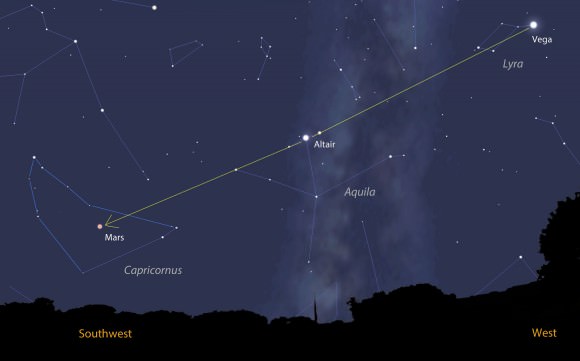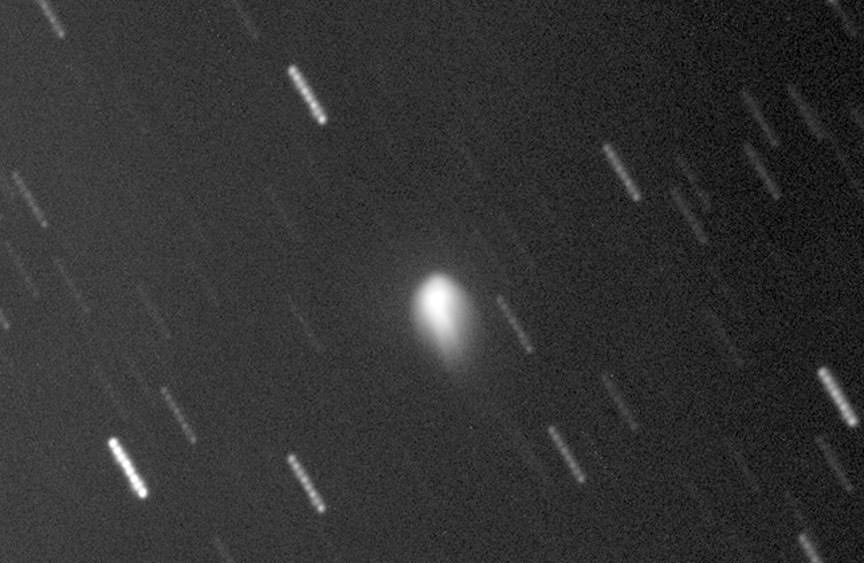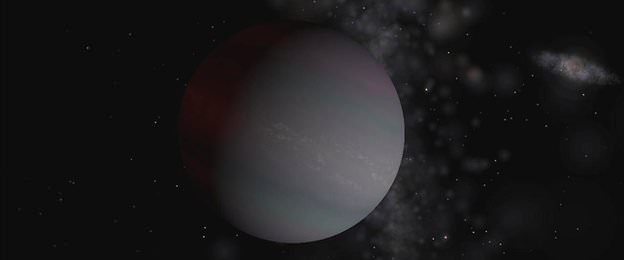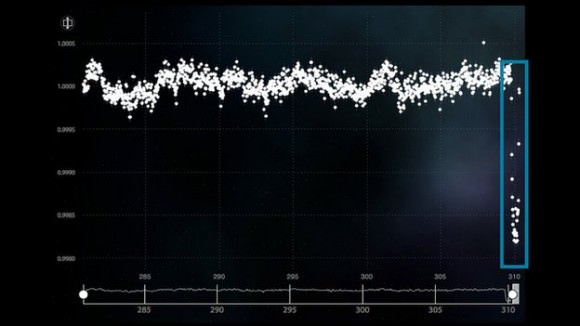Short-period comet 15P/Finlay, which had been plunking along at a dim magnitude +11, has suddenly brightened in the past couple days to +8.7, bright enough to see in 10×50 or larger binoculars. Czech comet observer Jakub Cerny and his team photographed the comet on December 16th and discovered the sudden surge. Wonderful news!
While comets generally brighten as they approach the Sun and fade as they depart, any one of them can undergo a sudden outburst in brightness. You can find Finlay right now low in the southwestern sky at nightfall near the planet Mars. While outbursts are common, astronomers still aren’t certain what causes them. It’s thought that sub-surface ices, warmed by the comet’s approach to the Sun, expand until the pressure becomes so great they shatter the ice above, sending large fragments flying and exposing fresh new ice. Sunlight gets to work vaporizing both the newly exposed vents and aerial shrapnel. Large quantities of dust trapped in the ice are released and glow brightly in the Sun’s light, causing the comet to quickly brighten.
Some comets flare up dramatically. Take 29P/Schwassmann-Wachmann. Normally a dim bulb at 17th magnitude, once or twice a year it flares to magnitude 12 and occasionally 10!

Whatever the reason, outbursts can last from days to weeks. It’s anybody’s guess how long 15P/Finlay will remain a relatively easy target for comet hungry skywatchers. While not high in the sky, especially from the northern U.S., it can be seen during early evening hours if you plan well.
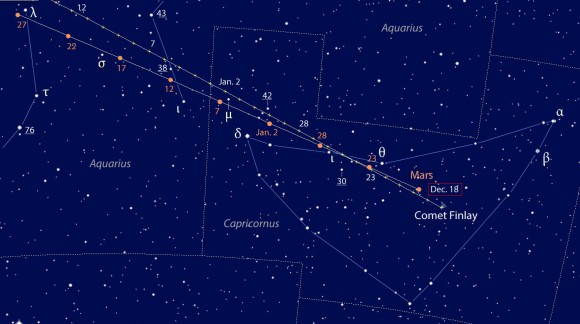
Comet Finlay was discovered by William Henry Finlay from South Africa on September 26, 1886. It reaches perihelion or closest approach to the Sun on December 27th and was expected to brighten to magnitude +10 when nearest Earth in mid-January at 130 million miles (209 million km). Various encounters with Jupiter since discovery have increased its original period of 4.3 years to the current 6.5 years and shrunk its perihelion distance from 101 million to 90 million miles.
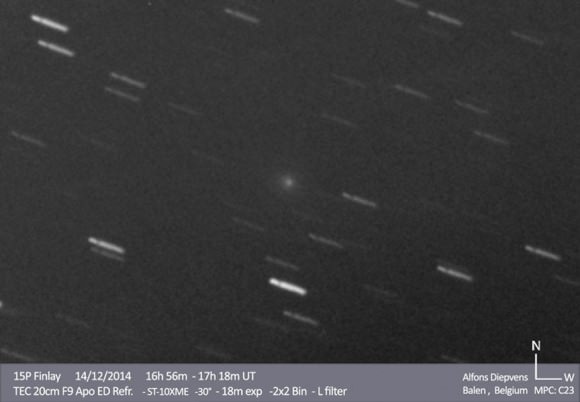
Looking at the map above it’s amazing how closely the comet’s path parallels that of Mars this month. Unlike Comet Siding Spring’s encounter with that planet last October, Finlay’s proximity is line of sight only. Still, it’s nice to have a fairly bright planet nearby to point the way to our target. Mars and Finlay’s paths intersect on December 23rd, when the duo will be in close conjunction only about 10? apart (1/3 the diameter of the Full Moon) for observers in the Americas. They’ll continue to remain almost as close on Christmas Eve. Along with Comet Q2 Lovejoy, this holiday season is turning out to be a joyous occasion for celestial fuzzballs!
